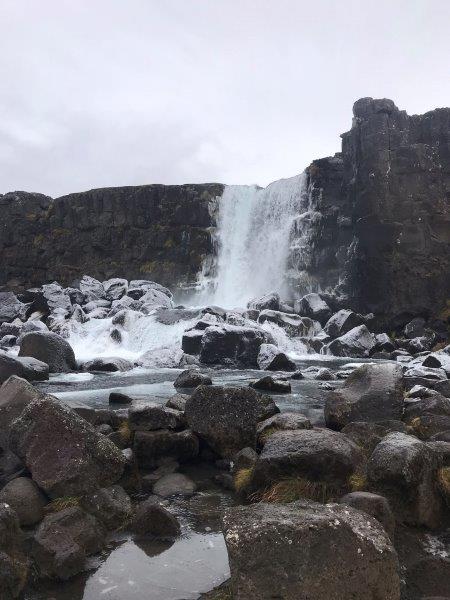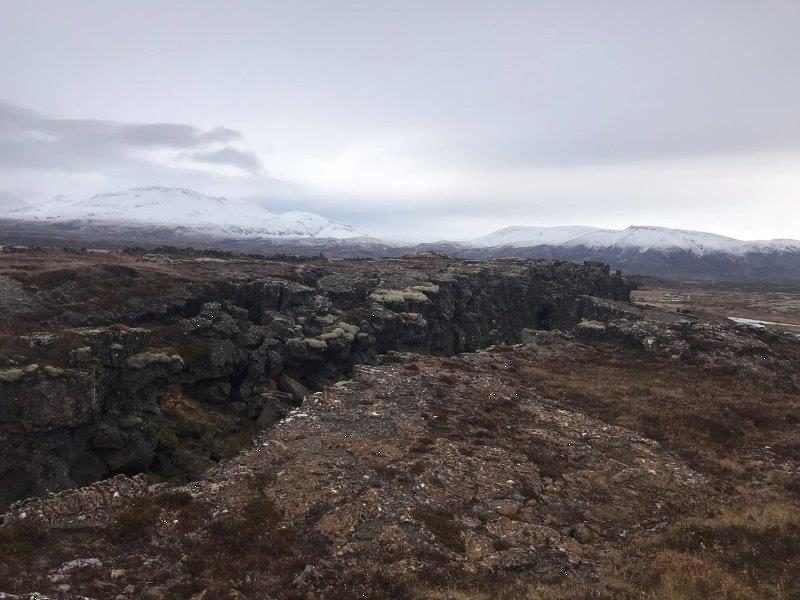Everyone is talking about Iceland. If you haven’t been, you are likely considering going, and if you have, you are probably planning a return trip. Until recently this remote island in the middle of the North Atlantic was quite isolated but increased airline routes mean Iceland is sharing its incredible landscapes and natural beauty with millions of visitors.

The rugged landscape of Iceland at the surface of two tectonic plates. Photo Paige McEachren
Iceland’s natural beauty earns the country its spot on most Environmental and Eco-Tourism ‘must-see’ lists. Heres why you should explore Iceland.
Iceland’s Amazing Culture
Iceland’s culture hasn’t changed much since the Norse settled the country in the 9th century. A great example is the Icelandic language which due to the country’s seclusion, the language has not been affected by external influences. Many Icelandic speakers can read Old Norse writing in the original text, something the original Norse countries (Norway/Sweden) can no longer do.
The cultural experience continues with traditional arts of weaving, wood carving and silversmithing. Almost everyone who travels there takes home something knit or crafted locally, many of which are made out of sheep’s wool. Considering there are more sheep in Iceland than double the human population it’s not surprising. If you get the chance visit Iceland’s Southernmost village Vik, check out the wool factory Ice Wear for the widest selection of wool products.

Öxaráfoss waterfall – Photo Paige McEachren
Explosive Volcanos
There is a reason Iceland is the land of Fire and Ice. With 30 active volcanic systems, there is a reason Iceland is the land of Fire and Ice.
For many, the Eyjafjallajökull volcanic explosion in 2010 was the first time they heard of Iceland. The six days when all planes across Europe were grounded brought attention to the island’s well-kept natural beauty and shortly after tourists started flooding the country.
Southern Iceland’s larger volcano, Katela, last erupted 100 years ago and based on previous patterns of every 20- 90 years, it is due to erupt anytime. You would expect locals who live or work in the area to be afraid. That is not the case. Their respect for nature means they don’t try to change what will happen, but accept it. The threat of impending explosive natural changes makes the people of Iceland live in the moment and enjoy life to the fullest.
If you want to find out more about Icelandic volcanos, visit the Volcano House in Reykjavik where children are encouraged for hands-on play with ask, lava and pumice from Iceland’s volcanos.

Sólheimajökull – Photo Paige McEachren
Melting Glaciers
Glacier tourism is a big deal in Iceland where there is a wide range of activities suitable for all ages and physical abilities. You can walk up to or on a glacier, kayak in its lagoon, ice hike, explore caves, or snowmobile across glacier peaks. When you realize what you thought was dirt covering the icy ground is ash from nearby volcanoes you are even more awe-struck by nature.
Jökulsárlón Lagoon is one of the country’s most spectacular destinations. The lagoon is located around 200 miles from Iceland’s capital Reykjavik, within Vatnajökull National Park where it lays at the base of the Vatnajökull (Iceland’s largest) and Breiðamerkurjökull glaciers that feed it. The lagoon’s black-sand beach is full of chunks of 1,000 year-old diamond-like ice that breaks off the glacier and washes ashore. These glaciers are the most visual indicator of climate change as you see the beauty as they melt. In fact, 60 years ago the lagoon did not exist and has since grown to be the deepest natural lake in Iceland.
All of this makes you aware the glaciers are receding at an alarming rate. If they continue at this pace, many predict Iceland will lose around 35% of it’s glaciers over the next 50 years. You need to go see the many forms and colors of Iceland’s glaciers before they melt away.

The beauty of Sólheimajökull – Photo Paige McEachren
Shifting Plates and Weekly Earthquakes
It’s funny, you may read this and think earthquakes are no a good reason to visit Iceland, but on the contrary, Iceland’s unique location on the plate boundary between the America and Europe Tectonic plates and around the Arctic Circle means it has nearly constant seismic activity. Some say the island experiences on average 500 earthquakes a week. Although many tremors are small, it points to the fact that the plates are being slowly torn apart.
One of the best places to see the tectonic plates is Thingvellir National Park, a UNESCO World Heritage Site. This breathtaking park is also home to Öxaráfoss waterfall. An easy drive from Reykjavik, this is a popular stop on most Golden Circle tours.

Mind the gap! Walk through the tectonic plates – Photo Paige McEachren
Be Part of the Solution
There are many ways tourists can contribute to the sustainable tourism of Iceland. Due to the high volcanic ash content of its soil, moss is crucial to prevent erosion and pollution. When travelling anywhere in Iceland pay attention to moss-covered areas since it only takes one mistaken path for a selfie or camping in restricted areas to destroy moss that will take 100 years to recover. Stay on the beaten tracks and avoid unintended damage to the ecosystem. You will not find cleaner or better tasting drinking water than directly from the taps or streams in Iceland. Bring a reusable water bottle and don’t buy disposal ones while there.

Moss is an essential part of the ecosystem- Photo Paige McEachren





